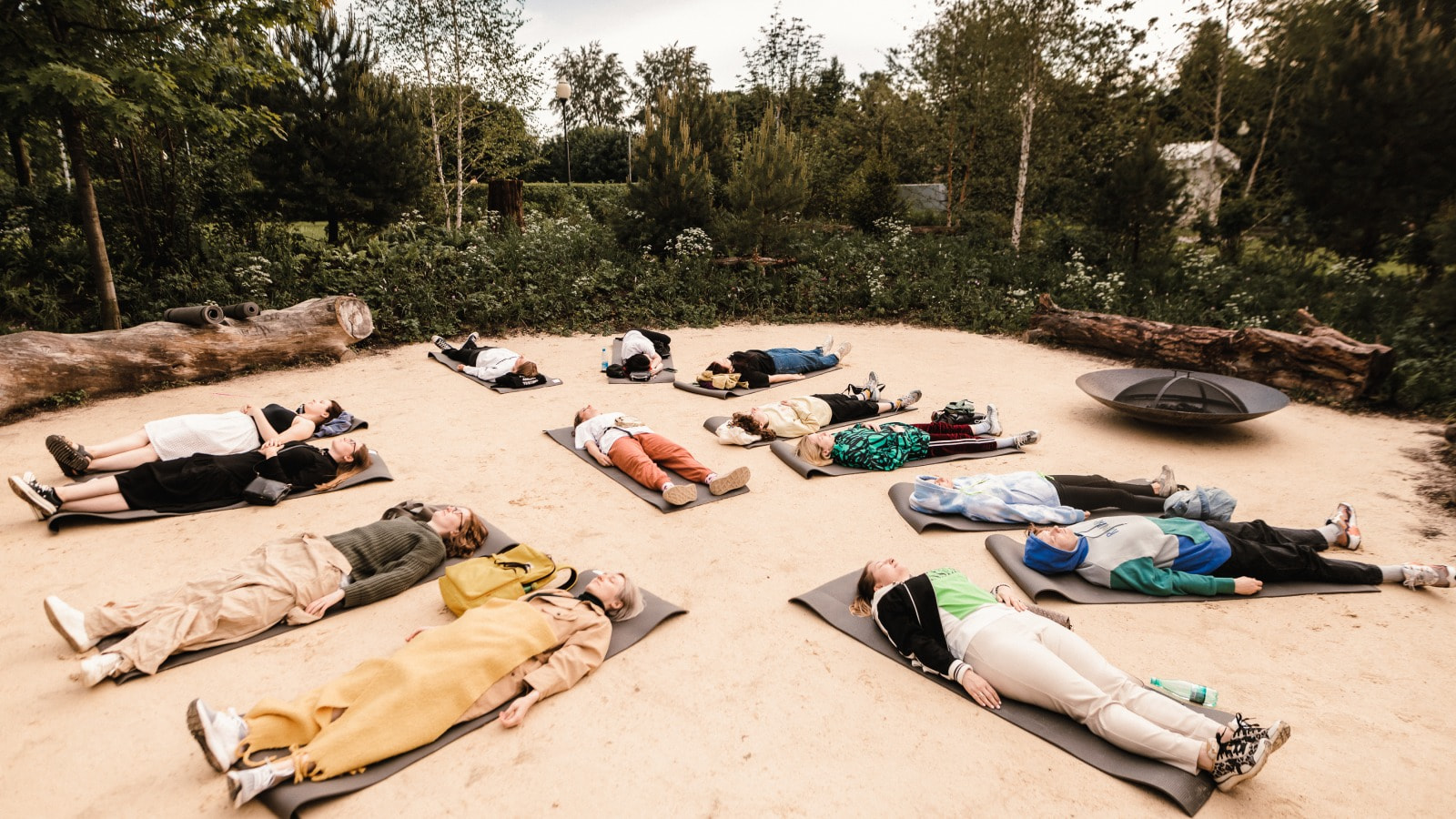Tina Shirokostup's Diary
The wonderful Silence project, where, dare I say this, I was lucky enough to work, ended yesterday.
It was a remarkable experience already because I spent four months in a green man-made garden, communicating with different but mainly pleasant and interesting people. Many interesting things happened during this time, which I will try to describe. Rather than a diary proper, this text is composed of my memories, reflections, and emotions invoked by our Silence.
My role in this project was not quite ordinary. I was neither a mediator nor an invigilator, but a person whose function was to inhabit, to revive the installation space with their presence, to become a genius loci of sorts. As you know, Paweł Althamer has already used this gimmick in other works. I suppose that my presence in the installation was helpful since I repeatedly heard from visitors that as they saw someone sitting on a log, walking around, watching plants, and so on, it made them want to get inside and see what’s going on there.
Now, more specifically. As I already wrote, most of the visitors had a positive attitude. They knew what Garage is and had an interest in contemporary art. There were especially many such visitors on the days when meditation sessions were held in the space of Silence. And it was all the more interesting with people, initially inclined toward denial, as sometimes I was still able to persuade them to look at it from a different angle. There were visitors who said that they would go and see the exhibition in the main building right away: they got intrigued. Very few visitors ended up proclaiming unpleasant things about the installation and me, e.g., “Only a town whack job can sit in here” or “If you position this space as a place of rest, take away the logs on which it is impossible to sit and put benches instead to make it comfy” (this is a quote). Some demanded to arrange a water supply (to make a lake or stream), allow them to burn a fire, discussed the “weird people lying in broad daylight on the sand” (during the meditation process), and photographed them without permission. One character spoke out against spending money on contemporary art in general, as “it would be better to build a canteen, which was here before.” Speaking about the logs, they aroused keen interest and were extremely popular throughout the project. Everyone wanted to sit on them and find a comfortable place for themselves. During the heat, resin appeared on the logs, which everyone smelled and admired with much joy.
Most visitors were very interested in the plants in the installation: they saw the “beauty of the mundane” in them and how beautiful the simplest herbs, trees, and flowers can be, which we see around but often do not notice. The unusual oak trees and numerous birds, and a squirrel that sometimes delighted us with its presence were popular excuses to launch a conversation with visitors.
Another visitor’s “hook” became the installation of the sculpture on the site. The reactions varied a lot, from sharply positive to sharply negative. Some people rushed away, saying, “Let's get out asap. There is nothing to do here.” The most frequent associations include: “this is a burnt a person,” “this work is about careless handling of fire,” “this is something from anatomy manuals,” “a man doused with sewage,” “this is a modern Baba Yaga,” “this is about what life has made of a man,” “this is an image of a person sprouting from the ground, their insides are roots,” and that the face of the sculpture resembles the famous bust of Voltaire. The work aroused huge interest among teenagers.
I met some interesting people—former compatriots who have not been to Moscow and Russia for a long time. We had lengthy conversations with them, and, as a rule, they liked pretty much everything and were favorably impressed by Garage, the park, and Moscow in general.
Summing up, I want to share the impression that in the overwhelming majority of cases, visitors left the installation in a much better mood than before they entered it, saying that they had rested, recharged with energy and beauty, and wished to return. Many did return, and even more than once. Some people spent their lunch break resting there, sitting on a log in the sun and recollecting themselves. Some people repeatedly attended meditations, whom we started to recognize.
There were visitors to the installation in almost any weather. I noticed, and visitors confirmed it to me, that perception changes with the weather, but it is always pleasant to stay here regardless of the weather. Visitors noticed (and I showed them) how trees and flowers change; some fade, others, on the contrary, gain strength and beauty.
The popularity of the project is evidenced by the fact that most of the visitors wished that the installation could stay there permanently, that it was not decomposed. Many said how impressed they were to find such a wonderful islet of nature in the center of Moscow.
In my opinion, the project was warm and humane, leaving the most positive impressions on me.
